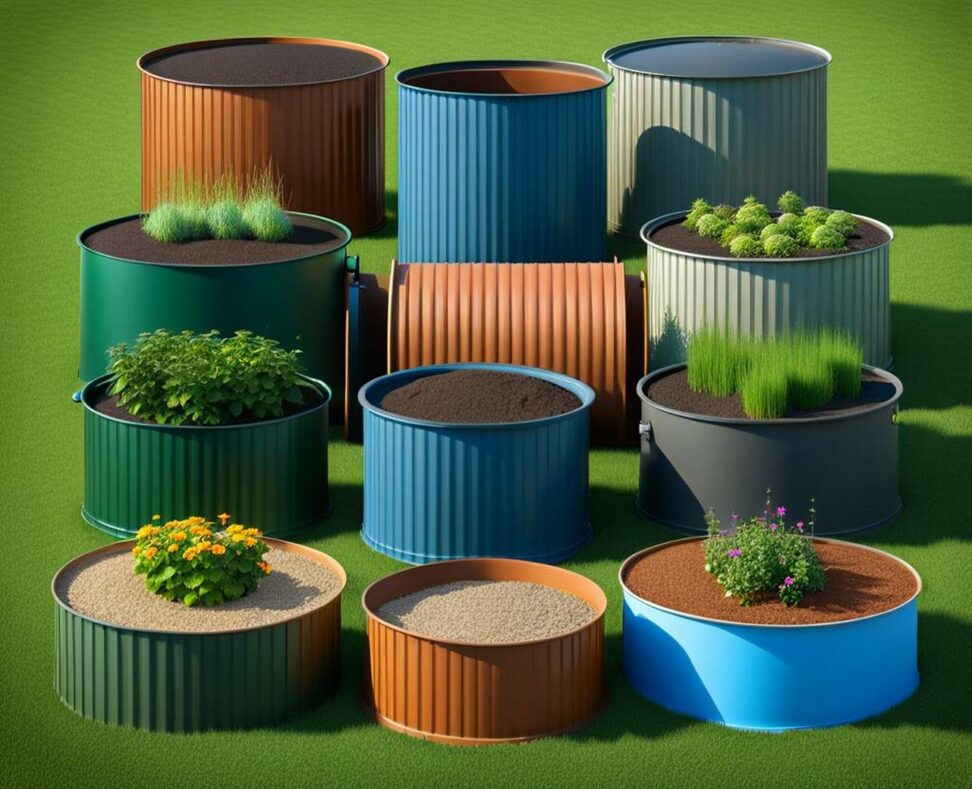Make Gardening a Breeze With Stock Tanks
For those with limited yard space or who struggle with back pain while gardening, stock tanks offer an innovative solution for easily tending a productive and beautiful garden.
Stock tanks are durable metal containers that provide all the benefits of raised bed gardening in a novel, space-efficient form. When used for planting, they boost accessibility, deter pests, reduce weeds, and require little maintenance while allowing you to grow tomatoes, herbs, vegetables, and more with ease.
Materials Needed
While stock tank gardens require some initial investment, they are relatively simple to install. Key supplies include:

- Galvanized steel stock tanks in your desired dimensions
- Weed barrier landscape fabric
- Topsoil and garden soil to fill the tank
- Gravel, mulch, or compost as a topper
- A drill and bit to add drainage holes
- Mesh screen to cover drainage holes to prevent clogging
- Bamboo poles, wooden stakes, or wire fencing for plant supports
Choosing the Right Stock Tank
Stock tanks come in a range of sizes, materials, and costs. Galvanized steel is the most durable option. For a vegetable garden, choose at least a 6-8 foot tank to allow adequate soil depth for plants to thrive.
Choosing an Optimal Location
When selecting where to install your stock tank garden, there are a few key factors to consider:
Sun Exposure
Most edible plants require at least 6 hours of direct sun daily. Choose the sunniest part of your yard to allow vegetables to flourish.
Visibility
Place your stock tank garden close to seating areas or frequently trafficked parts of your yard so you can monitor plant growth and enjoy the fruits of your labor.
Space Efficiency
One of the prime advantages of stock tanks is their ability to maximize yield in a confined area. Use them to cultivate herbs and greens even if you only have a small patio or balcony.
Installing Your Stock Tank Garden
Once you've gathered your materials and prepped your site, installing a stock tank garden involves just a few simple steps:
- Clear the area of grass, weeds or debris.
- Lay landscape fabric to form a weed barrier.
- Sit the stock tank and level it using gravel, blocks or pavers.
- Use a power drill to add drainage holes, covering them with mesh screens.
- Fill tank half full with topsoil, then remaining space with garden soil.
- Top with 2-3 inches of mulch or gravel.
Cutting Drainage Holes
Adding several drainage holes along the bottom of your stock tank is vital to prevent waterlogging. Cover holes with mesh screens to stop soil and mulch from escaping.
Planting Your Stock Tank Garden
When your stock tank is prepped and filled, it's time for the fun part - picking plants! Good options include:
- Tomatoes, peppers, lettuce, kale & herbs
- Strawberries, green onions & radishes
- Spinach, carrots, broccoli & bush beans
Supporting Plant Growth
Use bamboo rods, metal cages and wooden stakes to support plants as they grow. This is especially important for larger vegetables like tomatoes.
Caring for Your Stock Tank Garden
Stock tank gardens are relatively low maintenance, but still require care and attention over time:
- Water plants daily as needed to maintain moist (but not soaked) soil.
- Apply organic vegetable fertilizer every 2-3 weeks during planting season.
- Inspect regularly for pest or disease issues and treat organically.
- Trim back overgrown foliage and harvest produce promptly when ripe.
Expanding Your Stock Tank Garden
Once you discover just how convenient stock tank gardening can be, you may want to grow your system over time. Creative ways to expand include:
- Linking multiple tanks together with tubes or overflow pipes.
- Using stock tanks to create a vertical garden on a patio or deck.
- Adding water features like mini ponds or fountains in the center of your tank.
Customizing for Visual Interest
Consider painting or stenciling your stock tanks for extra personality. Surround tanks with potted ornamentals or edged with stone or bricks.
By installing a stock tank garden on your property, you'll enjoy homegrown produce, lovely flowers and foliage, and an easily managed system requiring little labor. Your raised bed will deter pests while giving your back a break!